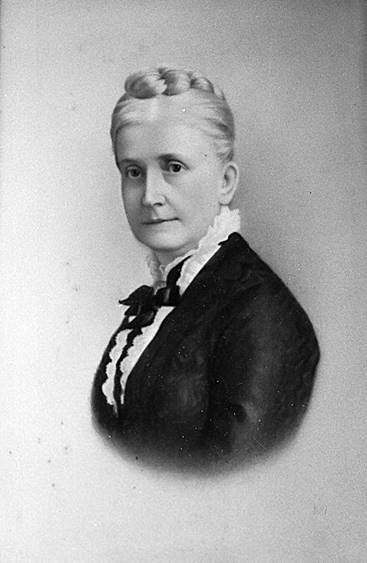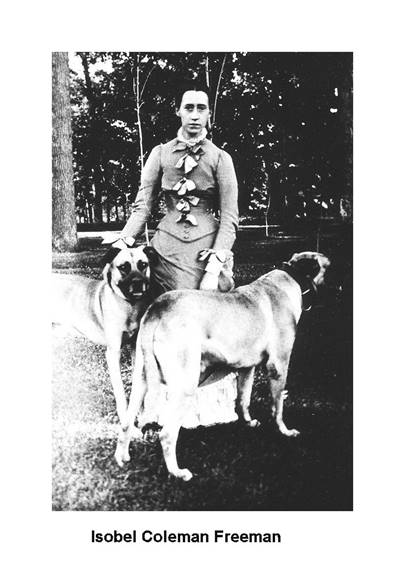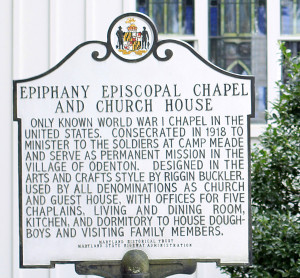Epiphany Chapel & Church House 1918
WWl Centennial ChapelKeeping the Faith
A 500-page Book of Records, History, and Photographs selected from 160 years of church records (including Ellicott’s Chapel, St. Peter’s Parish, Epiphany Chapel & Church House, and Epiphany Episcopal Church) has been published and is available on CD.
KEEPING THE HOME FIRES BURNING: On Monday, June 3, 1918, in Odenton, a chapel for the benefit of the soldiers at Camp Meade was dedicated by Bishop John Gardner Murray, assisted by Bishop Thomas J. Garland of Pennsylvania. (Read More)
The only known WWI Chapel in the United States – Consecrated on June 3, 1918
KEEPING THE HOME FIRES BURNING
On Monday, June 3, 1918, in Odenton, a chapel for the benefit of the soldiers at Camp Meade was dedicated by Bishop John Gardner Murray, assisted by Bishop Thomas J. Garland of Pennsylvania. The chapel was named Epiphany after the church in Washington attended by Mrs. Margaret Buckingham and Miss Elizabeth Freeman, the donors of the building and furniture. This service was attended by many of the clergy and laity from the dioceses of Maryland, Washington, and Pennsylvania: General Nicholson, Commandant of Camp Meade and a number of officers and soldiers from the camp. The building contained in addition to the chapel, a dormitory for the accommodation of chaplains and visitors to the doughboys. Meanwhile the old church which had ministered to the needs of the people in this part of Anne Arundel County was forced to discontinue its ministrations to some extent, because it was situated in the heart of the camp. It became a building devoted almost exclusively to war purposes. Finally it burned, apparently due to carelessness on the part of officers or soldiers of the camp. At the conclusion of the World War and the returning soldiers being mustered out of the service, the usefulness of Epiphany Chapel as a war chapel vanished. The building was then turned over to the communicants of the old parish, St. Peters, for use as a parish church.
This brief account of the establishment of Epiphany Chapel and Church House, now recognized as the only known WWI Chapel in the United States, was published in The Maryland Churchman in December 1936. It was the introduction to an impassioned appeal for donations to preserve the Chapel which was in need of a new roof and other repairs. The writer, George D. Watts, compared the the chapel in Odenton to the chapel at Valley Forge and Christ Church, Alexandria. “Generations yet unborn,” he pleaded, “will
visit this hallowed place if it is perpetuated for them.” The life and condition of the chapel ebbed and waned for another fifty years as it shifted with the economic and demographic tides. Its proud history as a World War Chapel was all but lost, save for a scrapbook compiled by the chaplains who staffed the chapel in 1918. It was this scrapbook, carefully preserved by Garner Rainey, archivist for The Diocese of Maryland, that was rediscovered in 1987 and made it possible for the recognition and restoration of the chapel. Among many financial supporters is The Maryland Historical Trust which holds three legal easements on the property to insure its preservation. The original scrapbook contained photographs, schedules, news articles, contracts, and letters that would be pieced together in order to discover the story of the chapel and lead to its preservation. Over a 30-year period, The Rev. Dr. Phebe McPherson and members of the Epiphany congregation raised the funds necessary to complete the project and in addition established a chaplain’s peace garden naming every WWI chaplain on bronze plaques and a social history museum with a collection of trench art, posters, books, furniture, photographs and music. Currently the congregation is redesigning its cemetery as the WWI Centennial Memorial Gardens to include a WWI Centennial sculpture. McPherson serves as a commissioner for the Maryland WWI Centennial Commission.
Discovering Epiphany Chapel and Church House is like finding a valuable coin mixed in the jar of pennies you had almost forgotten. To the casual eye, the little white church appears to be a quaint cottage of yesterday, a bit like “grandma’s house.” In fact, its design was given gratis by Riggin Buckler and represents a fine example of the Arts and Crafts period in American architecture. The front stoop is worn where so many feet have passed, the center floor beam is weighed down with memories, and a discernible spirit of hospitality shines like the patina on the old oak furniture. It’s obvious the moment you enter that this is a place where people have “kept the home fires burning” for their loved ones who were far from home in trenches fighting a war that all hoped would be “the war to end all wars.” Providing the chapel was The Rev. Taggart Steele’s idea. He wanted to establish a place where chaplains could help support the troops who were being deployed through Camp Meade. At first he sought use of an old house in the middle of the camp but was told it was being used for Belgium Relief Work. Undeterred from his mission,
he secured funds, an architect, and the blessings from three surrounding dioceses and the Church War Commission in Baltimore. He was chaplain-in-charge at the chapel until he and four other civilian chaplains enlisted and were deployed to France. A service flag with five stars hung above the chapel entrance.
Epiphany is a well-prayed-in chapel. It’s an ordinary little church with an extraordinary history. The chapel’s mission was to be a home away from home, a place where soldiers could gather for fellowship, counseling, worship, and to say farewell to loved ones. Family members were invited do spend the night in the accommodations on the second floor. From its very inception it was to be a place where all people are welcome, regardless of their religious affiliation, race, or ethnicity. Among the many period stained
glass windows, there is only one pictorial window. It depicts Jesus with the children surrounded by families. A strange selection for a military chapel? Hardly. It acknowledges that every soldier is someone’s child, someone’s parent, someone’s son or daughter. It acknowledges that when soldiers go to war, their families go too. The late Tom MacNemar, son of the local town doctor in 1918, remembered when the Armistice was announced. “I was four years old. The train whistles blew, the church bell rang. My mother took me by the hand and we ran down Odenton Road. We ran right into the chapel, up to the front pew, and got on our knees to thank God that the war was over and that my father would be coming home.”
Epiphany Chapel and Church House still stands as an active congregation serving the community and to give new generations a chance to remember those who made many personal sacrifices—the ones who fought and the ones who stood behind them. With the same spirit of inclusivity and support, Epiphany Chapel “welcomes all” and “keeps the home fires burning.”
For a virtual tour go to Google Street View:
Epiphany Episcopal Church, 1419 Odenton Road, Odenton, MD 21113
Website: www.f78.db2.myftpupload.com
National Registry Historic Site
Almost 100 years ago, 500,000 young men and women were trampling about on acres of former farmland and orchards that comprised a new military camp built during World War I. They had enlisted into the United States Army and were now undergoing training as soldiers serving in three infantry divisions. All of these young soldiers knew they would soon be shipping out to Europe to join the British and the French in the trenches of the western front. At the same time, there were faithful church men and women in Maryland, Pennsylvania and nearby Washington DC who became very much aware of the influx of these soldiers and of their social and spiritual needs. They therefore set about creating a place to welcome them and their families, providing a home-away-from-home to provide spiritual enrichment in preparation for life’s hard circumstances. Together they built and the staffed a cottage church called Epiphany Chapel and Church House located near the train station and just outside the grounds of Camp Meade.
A young priest from Maryland, Taggart Steele, rallied the community and with the support of Bishop John Murray, spear-headed the mission with financial help from two women from Washington D.C. and operating funds from the diocese. The people who built this chapel and mission had a vision. It was to be a home-away-from-home for all people. It was to be inclusive by design. It was available to all: Catholics, Protestants of all denominations, and Jews. And when racial segregation was the norm in American society, it welcomed people of all racial and ethnic backgrounds. At the dedication of the Chapel in 1918, General Nicholson, the Camp Commander assured the Rt. Rev. John Murray, Bishop of Maryland and later Presiding Bishop of the Episcopal Church, “You could not have done a better thing. Any [person] in the Camp shall be free to visit you on Sundays; and your workers will be welcome amongst us.”
This commitment of inclusiveness, established at the beginning of Epiphany’s ministry, must have embedded itself in the very structure of the church. It must have found itself in the walls, the ceilings, the floors where it could remain dormant until called forth once again by the present congregation, its Senior Warden, Jim Conboy, who has been part of the congregation since 1923, and its Rector, The Rev. Phebe L. McPherson.
Today, when the doors of Epiphany Church are opened, once again, a genuine and rich mixture of people can be seen. The People of Epiphany Church have reestablished the Epiphany Church community. They have built a congregation from 30 people to 300 people. They have completed three building projects to the tune of $3,000,000. Together they continue the mission — to make a home-away-from-home for others. These are some of the ways they have done this: securing the release and providing a new home (and life) for a woman incarcerated for twenty years; building a child care center for the community; giving up their own home for 14 months (having to gather in a warehouse) while completing the restoration of the church’s interior; providing leadership for a regional shelter for the homeless; creating a social history museum and a peace garden to honor chaplains of all faiths; providing support for soldiers away from home and those hospitalized at Walter Reed; ongoing support for other local social organizations, providing children from a near-by elementary school with a back-to-school camp, enduring huge legal fees to advocate for excellent child care; opening up the church to the community for a weekly Saturday night coffee house with live music; enriching the congregation with retired clergy who have called Epiphany home — Jim Hammond, Jack Malpas, Mike Coram, Edmund Ilogu, Carl Harris, Barney Farnham, and Dick Landis; and all the while, the leadership of this congregation has been intentionally creating a multiracial congregation whose membership and leadership provide an embodied vision of God’s home-away-from-home for all God’s people.
As in the early days of the chapel, this congregation has not done this alone, but has called upon the larger community to catch God’s vision. When we celebrate these accomplishments we give thanks for all those who have joined the infantry ranks: the Middendorf Foundation, the Middendorf Fund, the Maryland Archives, the Diocesan Grants Committee, St. Stephen’s Church, St. Margaret’s Church, the Maryland Historical Trust, Kiplinger’s Foundation, the TKF Foundation, The France-Merrick Foundation, The Arrowsmith Fund, the Maryland Transportation Administration, the State of Maryland Preservation Funds, the Office of the Army Chief of Chaplains, the Ft. Meade Museum, members of the congregation and many generous friends. Trusting in God, this house called Epiphany will continue for many years as a home-away-from- home for all God’s people.
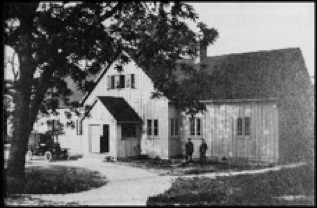
The original project in 1918 was supported by members of the Church War Commission from Maryland, Pennsylvania and Washington and by two women from Washington, D.C. who gave $11,000 for its construction. A young architect from Baltimore gave the design, gratis. Clergy staff, under the leadership of a young and dynamic chaplain, the Rev. S. Tagart Steele, Jr., was pulled together. The operation was up and running in 60 days. Enlisting young soldiers were welcomed with worship services, dinners, dances and counseling. Family members were invited to spend the night in the accommodations on the second floor, to spend time together and to say “good-bye.”
Tradition tells the story about a deacon, St. Laurence (d. 258), who in response to a command from the prefect of Rome to deliver up the church’s treasure, assembled thousands of ordinary people — the poor, children, widows, orphans, rich and poor, and presented them to the prefect saying, “These are the treasure of the Church.” Today, the preservation of Epiphany Chapel and Church House and the establishment of The Chaplains’ Peace Garden is just such an offering—an acknowledgment and tribute to the ordinary men and women who gave all they had for the well-being, safety, and freedom of others.
These are the extra-ordinary treasure of Epiphany Chapel and Church House.
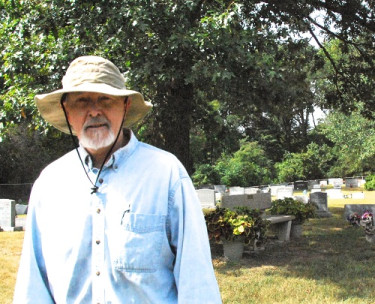
The Epiphany Church Cemetery
The property for the cemetery was purchased in 1925. Additional land was donated in the 1950’s. The cemetery was expanded in 2003 and the sale of graves continues. The Constitution and By Laws of Epiphany Cemetery were last updated in 2014. A memorial Garden for the interment of cremains is currently in the planning stages. Three trustees, appointed by the Vestry, manage the cemetery’s operations.

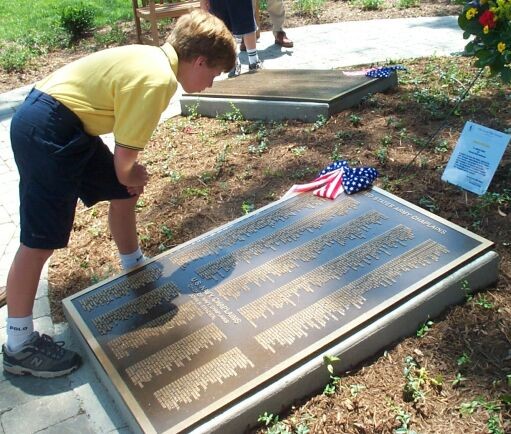
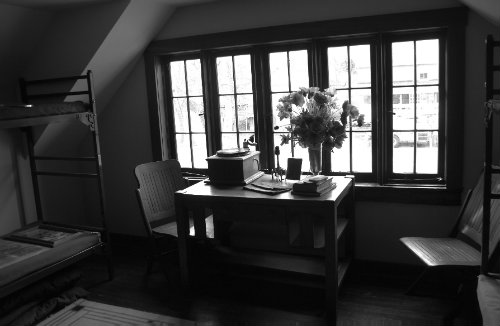


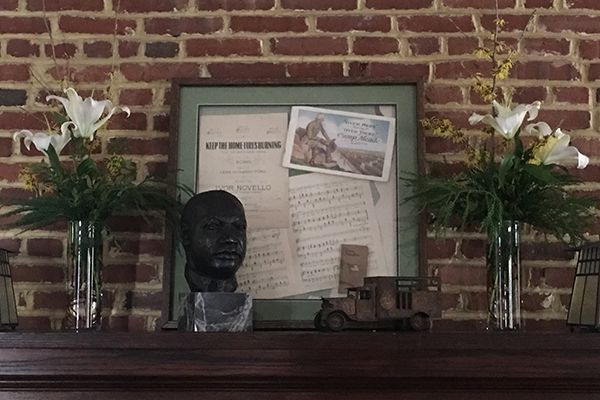
Epiphany Chapel and Church House
 This walk through history highlights the last 100 years at Epiphany.
This walk through history highlights the last 100 years at Epiphany.


